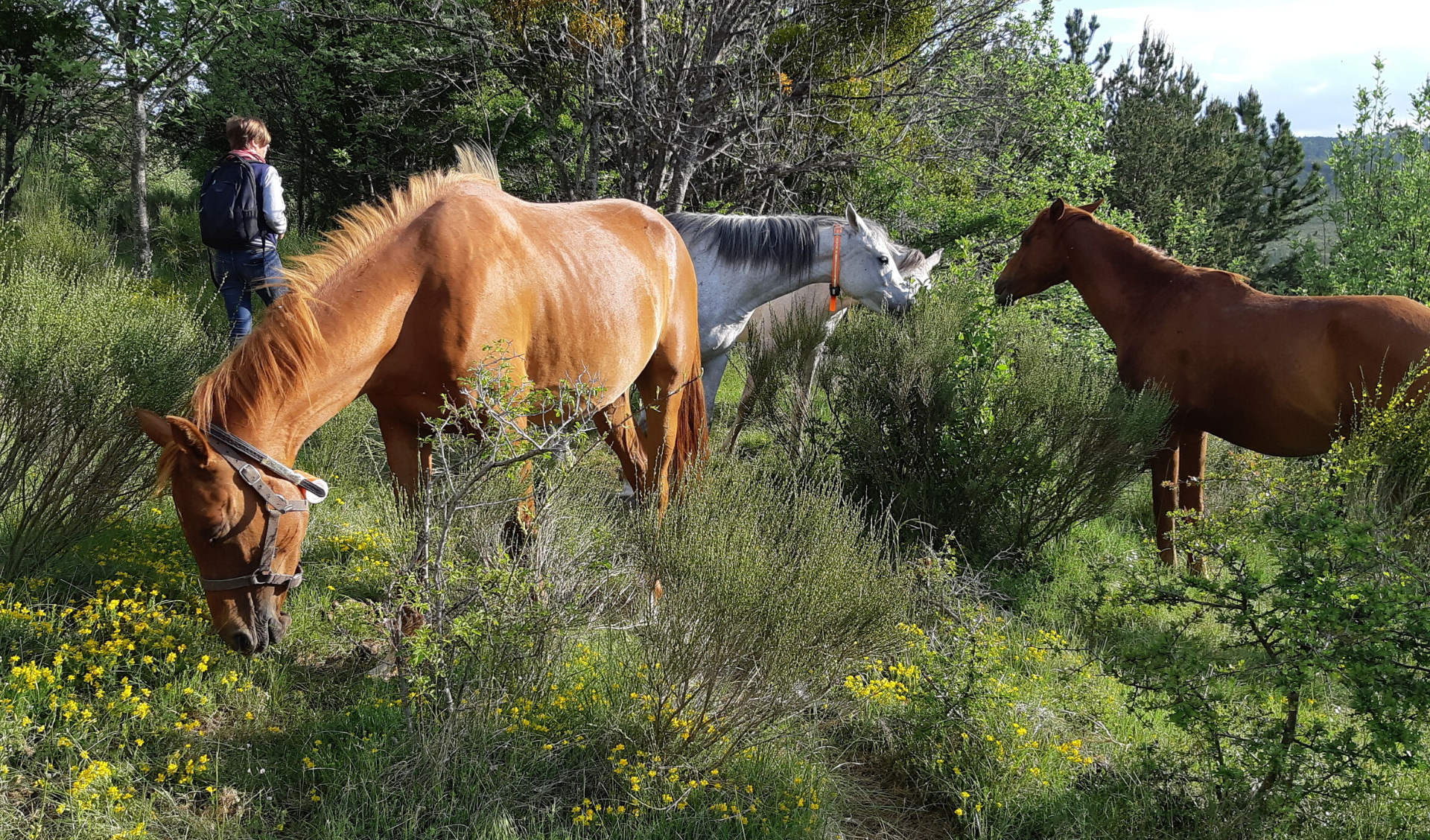Contribución de las plantas leñosas a la alimentación de los equinos en los pastos mediterráneos
DOI:
https://doi.org/10.19182/remvt.36956Palabras clave
caballos, alimentación en pastoreo, comportamiento animal, tierras de pastos, valor nutritivo, zona mediterráneaResumen
En los países mediterráneos, las zonas arbustivas y boscosas proporcionan forraje barato para los rebaños. Sin embargo, algunos ganaderos de equinos se muestran reacios a utilizar los pastos arbolados, que asocian a una alimentación de baja calidad. En este artículo exploramos algunos aspectos del comportamiento alimentario de los caballos en los pastos mediterráneos de matorral y de bosque, con el fin de documentar su interés pastoral para los equinos. Observamos la selección alimenticia de varios caballos jóvenes que pastaban en pastos típicos de zonas perimediterráneas. Las observaciones se repitieron en dos lugares, con cuatro caballos por lugar, durante cuatro días, mediante dos observadores. En cada lugar se equipó a dos caballos con collares de sistema de posicionamiento GPS para determinar su presencia en distintas zonas del parque. Las plantas ingeridas se clasificaron en una tabla de codificación. Las características químicas de cada alimento se estimaron mediante espectroscopia de infrarrojo cercano (NIRS). Una clasificación jerárquica de los espectros NIRS nos permitió definir cuatro categorías. Se ingirieron hojas, ramitas y flores de varias especies leñosas (1‒18 % de los bocados registrados), aunque se prefirieron las especies herbáceas (> 80 % de los bocados). Los caballos exploraron la totalidad de los parques, pero pastaron preferentemente en las zonas abiertas. Las diferencias observadas entre los lugares sugieren un importante efecto de las condiciones locales de pastoreo. La composición química de los alimentos procedentes de arbustos y de árboles era parecida a la de las plantas herbáceas, pero bastante diferente a la de las gramíneas. Tres de las cuatro categorías combinaban plantas leñosas con herbáceas. Estas categorías tenían características nutricionales interesantes (proteína > 12 %). Los resultados confirman una contribución positiva de las plantas leñosas en la nutrición de los caballos, complementando las demás funciones de las plantas leñosas en el bienestar de los caballos que pastan.
Descargas

Descargas
Archivos adicionales
-
Resumen1916
-
pdf 850
-
Matériel supplémentaire / Supplementary Material 22
Recibido
Aceptado
Publicado
Cómo citar
Número
Sección
Categorías
Licencia
© E.Mikicic et al., publicado por CIRAD 2023

Esta obra está bajo una licencia internacional Creative Commons Atribución 4.0.





